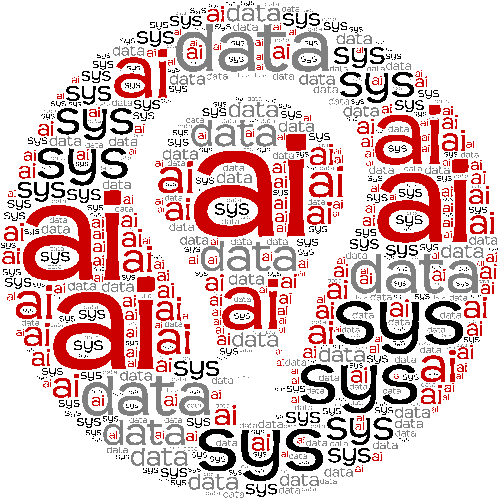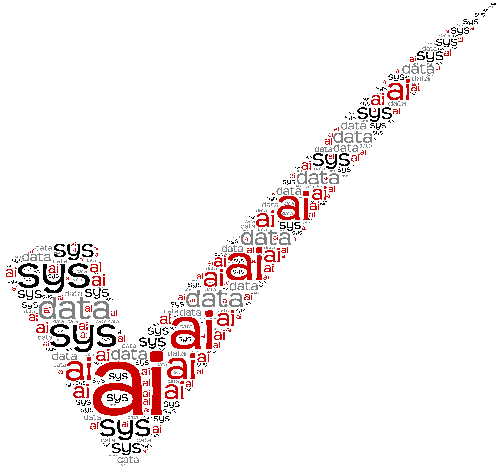ai.sys group at the University of Utah
ai.sys
Many call this is the age of information. It is perhaps more accurate to call it the age of data since not everyone has the ability to truly gain from all the data they collect. Many are either lost in the data, or misled by it through use of automated tools. Yet, the promise of being informed by data remains. Further still, in many cases the data can be leveraged through systems engineering techniques to develop strategies and optimize processes.
Mission
The ai.sys group makes AI better. We develop algorithms for AI, model systems and develop computational tools for education and research.
News & Downloads

Image © Copyrighted ai.sys
- ai.sys has been engaged by Newmont, the world's largest gold miner, for bespoke AI algorithms.
- Read paper on BoxRF, our new AI method for grade estimation and other spatial regression problems. Download BoxRF, the software.
- Our FREE analytics software, UteAnalytics, has now been released. Click here to download.
- Now published (8/2024). Dr. Ganguli contributed the peer reviewed chapter "Machine Learning: The Language of Safety”, in the reference book, "Mine Safety and Health Handbook: Approaches from the Field" produced by the Soc. of Mining, Metallurgy and Exploration.
- Dr. Rajive Ganguli to give the keynote address at the 7th Advanced Process Control Conference in June, 2023, in Lima, Peru. Click here for his talk.
- ai.sys to assist Newmont with mine to mill relationships at one of their large mines
- In a fun project for the University of Utah Marriott Library, the ai.sys group produced a profile of miners employed at the Bingham Canyon mine in the early 1900s.
- ai.sys to assist environmental justice researchers with analytics at the University of Utah in several projcts.
- We are offering hands-on training on analytics as a series of 8-hr courses (live, via Zoom, or at your site) to practicing professionals. The goal is to train process experts to become effective analysts, as analytics is best done by process experts. We have trained engineers from large organizations.
- See other news, or download papers.
INSIGHTS GAINED
|
|
Image © Copyrighted ai.sys
UteAnalytics, Our Free Analytics Tool
We wish to empower domain experts who are not programmers, with machine learning. Check out our free tool.
Mine to Mill
Due to confidentiality agreements, the insights on mine to mill project cannot be shared at the moment.
Language of safety
Can narratives of safety incidents from one organization help analyze narratives of safety incidents from another organization? It seems they can. Our team was able to successfully analyze reports from a mining partner using natural language processing (NLP) based analytics tools developed for public domain sources. The tools can be used to define data driven leading indicators at industrial sites. Download our peer reviewed papers on the topic.
Sensor data quality
|
Researchers from the group were able to identify errors in temperature sensors of gold stripping vessels at a gold mine in Alaska when the errors were still small. In industrial settings, sensor calibrations are often a year or more apart. Industrial processes operate on faulty data until errors become so large as to be obvious. The US oil industry alone loses $20 billion annually from operating on faulty sensor data. |
Material Flow
|
How long does it take for material dumped at crushers to reach the mills? Management at a large mine in Mongolia had this question. This question is quite common when management focuses on mine-to-mill grade control. The answer is tricky, as most mines have several silos/stockpiles between crushers. Researchers from the group used a variety of numerical tools on material flow and grade data, to answer the question. |
KEY PLAYERS

Image © Copyrighted ai.sys
Rajive Ganguli, PhD, PE
Dr. Ganguli, who formed this group, has been teaching and applying artificial intelligence (ai) since before it was cool in the mining industry. He has applied ai and systems engineering (sys) in a wide variety of contexts, and not just in the mineral industry. He has worked in mines in India and in the US. Click here for more information.
Bryony Richards, PhD
Dr. Richards is a diverse geoscientist with a recognized background in the integration
of cross-disciplinary scientific methods; petrological methods, high-resolution imaging,
remote sensing (including magnetic and gravity interpretation), the understanding
of complex datasets, igneous and metamorphic geochemistry, and radiochemistry (thermochronology,
geochronology, and stable isotopes). Her research interests are focused on resource
exploration and using cross-disciplinary scientific methods to deepen our understanding
of Earth processes.
Narmandakh Sarantsatsral, PhD
Narmandakh has been a part of the ai.sys group from its inception. He recently graduated from the doctoral program in mining engineering. Prior to this, he was with Erdenet Mining Corporation, Mongolia, as a chief engineer.
Lewis Oduro
Lewis recently graduated from the master's program in mining engineering, and his currently in the mining industry. He continues to engage with the group particularly with regards to his graduate work, UteAnalytics. He came to us from Ghana. He was with Newmont prior to his graduate studies.
Raviteja Tatikonda
Teja is in the master's program in mining engineering. He comes to us from India. He worked for Hindustan Zinc Limited and Hutti Gold Mines in India.
Elijah Marshall
Elijah is in the master's program in mining engineering. He comes to us from Ghana. He worked for Newmont for several years before joining our team.
Ishmael Anafo
Ishmael is in the master's program in mining engineering. He comes to us from Ghana. He worked for Kinross and others before joining our team.
Ebenezer Cobbinah
Ebenezer is in the master's program in mining engineering. He comes to us from Ghana. He worked for Obuasi mine and others before joining our team.
Macdonald Mashawi
Macdonald is in the master's program in mining engineering. He comes to us from Zimbabwe. He and his family operate a small scale gold mine.
New Students
We are expecting new graduate students to join us shortly. Like all members of this team, they have significant mining industry experience.
What are we up to?

Image © Copyrighted ai.sys
MINE TO MILL
We are assisting one of the largest mining companies in the world understand how geology impacts metal throughput at one of their operations.
IMPACT OF COVID
COVID has had a dramatic impact on society, some of which has opened up very interesting opportunities to study complicated issues. For example, how are traffic, air quality, public policy and hospital visits related? The ai.sys group is currently working with faculty in atmospheric sciences, medical school and political science to understand exactly that.
ANALYZING SAFETY NARRATIVES
Whether they are work place observations made through an app, or reports entered into a mine safety health management systems, textual narratives are an important source of information that can be leveraged to identify patterns and design safety interventions. In partnership with mines, we are using natural language processing (NLP) to design algorithms (more suited for mining industry related narratives) to gain key insights.
Dynamic Mill Simulator
We are developing a training simulator for mill operators. This is to help mill operators get a holistic view of the grinding circuit. The simulator allows for customizable mill circuits. Features include SAG mill ball mill, screens, cyclones and circuit splitter.

